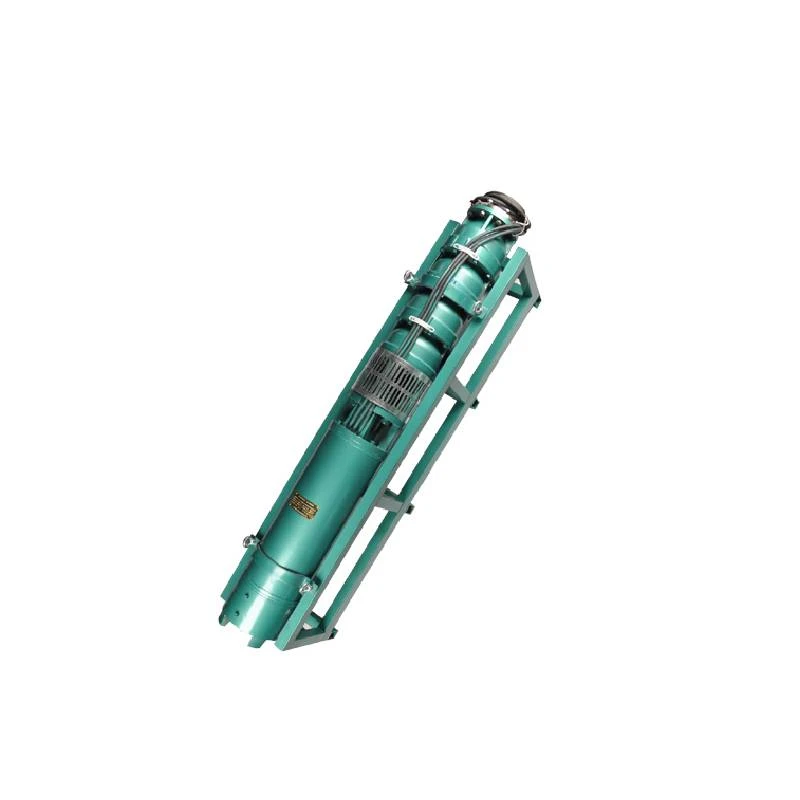Sep . 15, 2024 07:20 Back to list
how to install a submersible sump pump
How to Install a Submersible Sump Pump
Installing a submersible sump pump is a manageable task that can help protect your home from flooding and water damage. This guide will walk you through the steps needed to install a sump pump effectively.
Materials Needed
Before you begin, gather the necessary materials and tools. You will need
- Submersible sump pump - Sump basin or pit - Check valve - PVC piping and fittings - Waterproof caulk or sealant - Drill and drill bits - Shovel - Level - Rags and a bucket
Step 1 Choose the Location
Select an appropriate location for your sump pit. Ideally, this should be in the lowest part of your basement or crawl space where water tends to accumulate. The pit should be away from any walls to allow for proper drainage. Check local building codes for regulations regarding sump pump installations.
Step 2 Dig the Sump Pit
Once you've chosen a location, dig a hole at least 2 feet deep and 18 inches wide. The depth can vary based on your specific drainage needs. Ensure the sides are level and that the base is flat, which will help the pump function efficiently.
Step 3 Prepare the Sump Pump Basin
If you’re using a pre-manufactured sump basin, place it in the hole. Ensure the top of the basin is level with the floor. If you’re making your own pit, smooth the bottom and sides before proceeding. Use the waterproof sealant around the edges of the pit to prevent water from seeping in.
how to install a submersible sump pump

Step 4 Install the Sump Pump
Carefully place the submersible pump into the basin, making sure it sits flat on the bottom. The pump should be positioned upright and not tilted. Follow the manufacturer's guidelines for any specific installation procedures.
Step 5 Add the Discharge Pipe
Using PVC pipe, connect the pump to a discharge line that directs water outside your home, away from your foundation. Use a check valve in this line to prevent backflow of water into the sump pit. Cut the PVC to the required lengths and attach the pieces securely, ensuring there are no leaks.
Step 6 Test the Pump
Before sealing everything up, test the pump to ensure it operates correctly. Pour several gallons of water into the sump pit. The pump should turn on automatically and drain the water effectively. If it does not, check your connections and power source.
Step 7 Finish Up
Once you’re satisfied that the pump is functioning properly, fill the area around the sump basin with gravel or soil to provide support. Seal any openings with waterproof caulk to minimize water intrusion into your basement.
Step 8 Regular Maintenance
Regularly check your sump pump to ensure it is working correctly. Clean the basin, inspect the float switch, and test the pump periodically, especially before the wet seasons.
By following these steps, you can successfully install a submersible sump pump, providing peace of mind that your home will remain dry during heavy rainfall. Taking these precautions now can save you from costly repairs in the future.
-
Submersible Water Pump: The Efficient 'Power Pioneer' of the Underwater World
NewsJul.01,2025
-
Submersible Pond Pump: The Hidden Guardian of Water Landscape Ecology
NewsJul.01,2025
-
Stainless Well Pump: A Reliable and Durable Pumping Main Force
NewsJul.01,2025
-
Stainless Steel Submersible Pump: An Efficient and Versatile Tool for Underwater Operations
NewsJul.01,2025
-
Deep Well Submersible Pump: An Efficient 'Sucker' of Groundwater Sources
NewsJul.01,2025
-
Deep Water Well Pump: An Efficient 'Sucker' of Groundwater Sources
NewsJul.01,2025
-
 Submersible Water Pump: The Efficient 'Power Pioneer' of the Underwater WorldIn the field of hydraulic equipment, the Submersible Water Pump has become the core equipment for underwater operations and water resource transportation due to its unique design and excellent performance.Detail
Submersible Water Pump: The Efficient 'Power Pioneer' of the Underwater WorldIn the field of hydraulic equipment, the Submersible Water Pump has become the core equipment for underwater operations and water resource transportation due to its unique design and excellent performance.Detail -
 Submersible Pond Pump: The Hidden Guardian of Water Landscape EcologyIn courtyard landscapes, ecological ponds, and even small-scale water conservancy projects, there is a silent yet indispensable equipment - the Submersible Pond Pump.Detail
Submersible Pond Pump: The Hidden Guardian of Water Landscape EcologyIn courtyard landscapes, ecological ponds, and even small-scale water conservancy projects, there is a silent yet indispensable equipment - the Submersible Pond Pump.Detail -
 Stainless Well Pump: A Reliable and Durable Pumping Main ForceIn the field of water resource transportation, Stainless Well Pump has become the core equipment for various pumping scenarios with its excellent performance and reliable quality.Detail
Stainless Well Pump: A Reliable and Durable Pumping Main ForceIn the field of water resource transportation, Stainless Well Pump has become the core equipment for various pumping scenarios with its excellent performance and reliable quality.Detail
